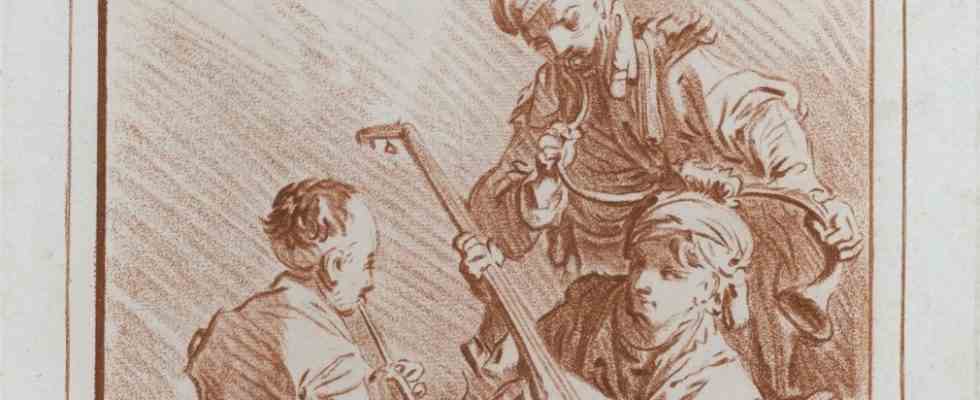In the beginning there is greed. The greed to own a work of art all to yourself. However, since this is not so easily possible, financial obstacles such as the limited number of coveted artefacts are an obstacle, most people have to be content with reproductions of the coveted item, which should be as close to the same size and appearance as possible, and the same paper texture as the original . But such remakes are and have never been easy to produce, facsimiles are usually still expensive, and modern prints in books often have little to do with the originals either in color or size.
Anyone who is currently visiting the MFA, the museum for casts of classical sculptures in the House of Cultural Institutes, the former NSDAP administration building, will come across a number of plaster casts of well-known sculptures right at the entrance. The copy of Hercules Farnese resting on his club is prominent in the atrium at the back. The huge piece overwhelms, amazes. It’s almost as if you were standing in Naples in front of the original of the same size. In front of this sculpture, the question of whether it is an original, a copy, or a forgery shrinks to an insignificant mirror fencing.
On the first floor of the atrium, this question is explored in depth in the exhibition “Innocent Deceptions”. The title is based on a print of reproductions published in 1743, the “Impostures innocentes”. The art maniacs of the world have always wanted such deceptively real reproductions of paintings and especially hand drawings. Rafael was and is at the top of the wish list, followed by Guercino, Sebastiano del Piombo, Watteau, Claude Lorrain and Boucher, who was already actively serving the repro market. According to the exhibition organizer Ulrike Keuper in her inspiring catalog of essays, hand drawings were valued particularly and often more than paintings because they show “the handwriting associated with an individual artist, manifesting itself spontaneously and unconsciously on the sheet”, i.e. something “which is actually unrepeatable is.”
Technically repeating what was spontaneously thrown out and therefore unrepeatable with cold calculation is a contradiction that appealed to the reproducers. At first it was impossible to reproduce the subtleties of a hand drawing, hatching, shading, smearing, intensities and washes, especially when working with sanguine, pastels, chalk or charcoal.
Groping towards the feigned authenticity: copperplate engraving, tone woodcut, etching, crayon-style, multi-color printing, mezzotint
A modern printing device, which stands between the exhibition showcases and is used diligently by the Central Institute for Art History housed here, is a reminder of how easy it has been to create deceptively real copies since the 1930s and the invention of xerocopy. But the late 18th century brought it to mastery. The exhibition documents this great triumph in the history of technology and art in a number of collective prints such as the legendary “Receuil Crozat”, the aforementioned “Impostures”, the “Liber veritatis”, the “Fragments chosis” and other expensive folios.
The French printers, in particular, approached the feigned authenticity with ever new and often combined reproduction techniques: copperplate engraving, tone woodcut, etching, crayon style, multicolor printing, mezzotint. Completion of the claimed fidelity to the original was then achieved in the 1760s with the aquatint process. A short exhibition video on an iPad shows how rosin is dusted onto a copper plate, how it is baked and then drawn on. Lithography, invented at the end of the 18th century, made it even easier to make copies, followed by photography and xerography.
The exhibition only shows reproductions from the 19th century, originals would not have been affordable in this context. But that’s not a flaw. Because the visitor quickly becomes enthusiastic about the remakes of Bible scenes, portraits, mythology, Galatea, back nudes, angels, horses, Daphne, which are cleverly presented as originals. And especially for Gilles Demarteau’s “Russian Concerto”, printed in 1770, whose finely hatched red tones actually seem to make the unusual instruments of the three musicians, who have just eaten and not drunk, sound. It’s all a miracle. That’s how you like to be cheated.
The exhibition “Innocent Frauds. Reproduction graphics based on hand drawings” is open until March 31st Central Institute for Art History, Katharina-von-Bora-Straße 10, to see. Admission is free, the accompanying essay of the same name costs 10 euros.

